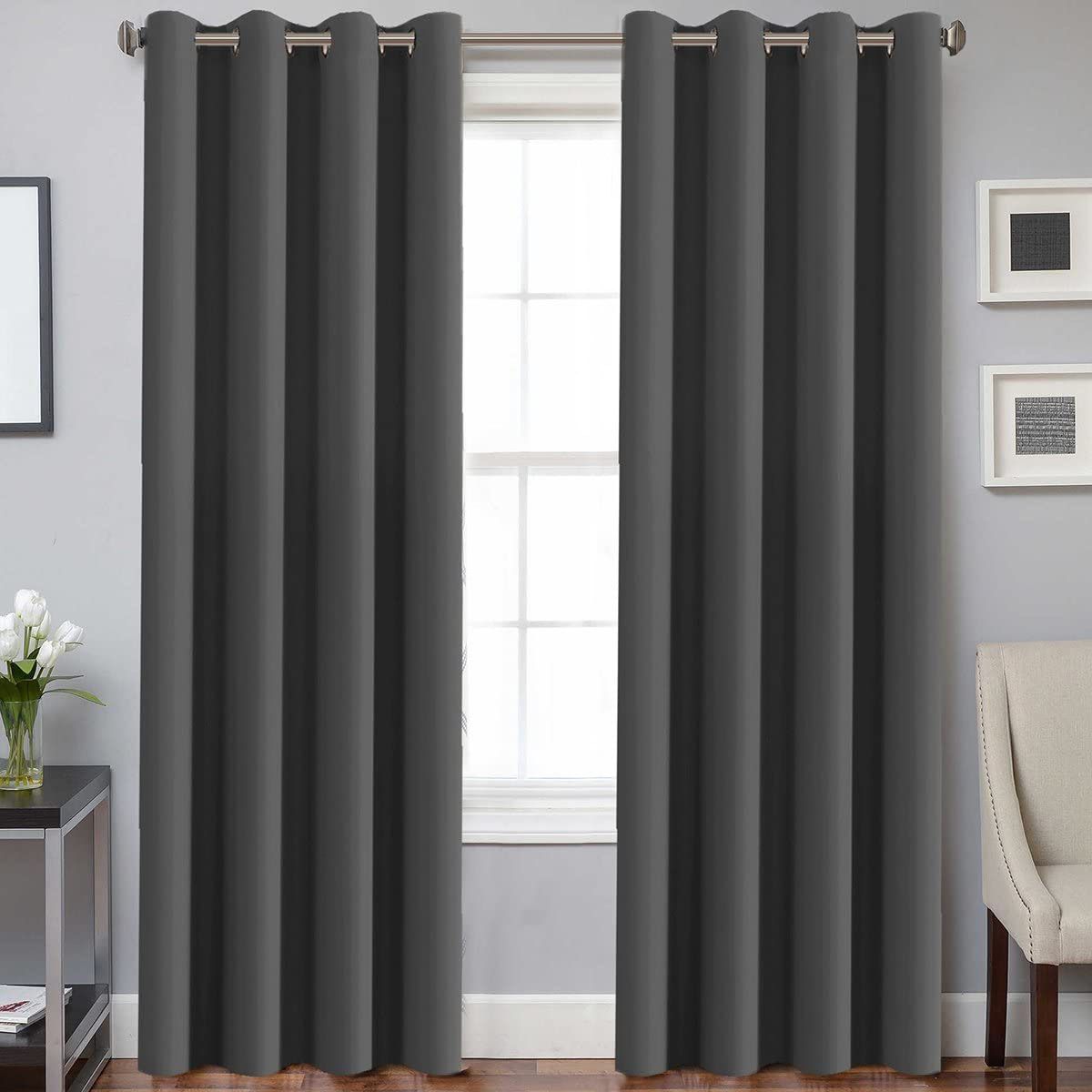Keeping your home comfortable and energy-efficient is a priority, and one way to accomplish this is by choosing the right window treatments. Insulated drapes, also known as thermal curtains or heat-blocking curtains, have become increasingly popular for homeowners who want to regulate indoor temperature, reduce energy costs, and add a stylish element to their interiors. This article explores everything you need to know about insulated drapes, how they work, their benefits, and how to choose the best ones for your home.
What Are Insulated Drapes?
Insulated drapes, or thermal curtains, are a type of window treatment specifically designed to block heat transfer through windows. These curtains are usually made with multiple layers, including a thick, insulating layer that helps trap air, preventing heat from escaping in winter and keeping hot air out during summer. The goal of insulated drapes is to improve energy efficiency, keeping your home warmer during cold months and cooler in hot weather.
Heat-blocking curtains serve a similar purpose, with an added emphasis on minimizing solar heat gain. By reducing the amount of heat that enters a room, these curtains help maintain a stable indoor temperature, reducing the need for excessive heating or cooling.
How Do Insulated Drapes Work?
Insulated drapes work by creating a barrier between the interior of your home and the external environment. They are typically made from thick, tightly woven materials combined with a lining or an insulating layer. Here’s how each component contributes to the curtain’s heat-blocking abilities:
- Outer Layer: This layer is often made of decorative fabric that enhances the visual appeal of the drapes while providing an initial barrier against heat. The fabric’s thickness and color can also affect heat absorption and reflection, with darker colors absorbing more heat and lighter colors reflecting it.
- Insulating Layer: The insulating layer is the core component that provides the thermal effect. Made from materials like foam, felt, or fleece, this layer traps air, which naturally resists temperature changes. In winter, this trapped air acts as a buffer, preventing warm indoor air from escaping through the windows. In summer, it stops outdoor heat from penetrating your living space.
- Backing or Lining: Many insulated drapes come with a lining made from reflective materials or blackout fabrics, which further enhances their thermal performance. The lining also helps block sunlight, reducing glare and offering added privacy.
The Benefits of Insulated Drapes
Using insulated drapes and heat-blocking curtains in your home offers numerous advantages beyond just aesthetic appeal. Here are some key benefits:
1. Energy Savings
By reducing the amount of heat lost through windows in the winter and blocking heat from entering in the summer, insulated drapes can significantly lower your energy bills. According to the U.S. Department of Energy, properly installed thermal curtains can reduce heat loss by up to 25%, translating into considerable savings over time.
2. Improved Indoor Comfort
Insulated drapes help maintain a consistent indoor temperature, reducing the need to frequently adjust your thermostat. In winter, these curtains keep rooms warmer, while in summer, they block out excessive sunlight and prevent heat buildup. This consistent temperature control makes living spaces more comfortable throughout the year.
3. Noise Reduction
The thick, layered construction of insulated drapes also offers excellent soundproofing properties. If you live in a noisy area, such as near a busy road or in an apartment complex, heat-blocking curtains can reduce unwanted noise, creating a quieter, more peaceful environment indoors.
4. Enhanced Privacy and Light Control
With their multi-layered construction, insulated drapes offer better privacy than standard curtains. Additionally, many thermal curtains come with blackout lining, which blocks out light completely. This makes them ideal for bedrooms, nurseries, or media rooms where controlling light levels is essential.
5. UV Protection
Prolonged exposure to sunlight can cause fading and deterioration of furniture, flooring, and other interior elements. Insulated drapes, particularly those with UV-resistant layers, help protect your belongings from harmful UV rays, extending their lifespan and maintaining their appearance.
Choosing the Right Insulated Drapes
When it comes to selecting the best insulated drapes or heat-blocking curtains, there are a few essential factors to consider:
1. Material and Fabric Type
The fabric used in insulated drapes can significantly affect their performance. Heavier fabrics like velvet, microfiber, or suede provide more insulation than lighter materials. Look for drapes that feature multiple layers and high-quality insulation material, as these will be more effective at blocking heat.
2. Size and Fit
For maximum thermal efficiency, your insulated drapes should cover the entire window and overlap slightly on all sides. Choose a size that is wide and long enough to prevent drafts and fully block out light. Ideally, the curtains should extend several inches beyond the window frame on both sides and reach from ceiling to floor for optimal coverage.
3. Color and Style
While darker colors may be more effective at absorbing and blocking heat, lighter colors can reflect sunlight and may suit bright, sunlit spaces better. Choose a color and style that matches your interior décor but also considers your room’s lighting and heating needs.
4. Lining Options
Blackout linings are a popular choice for those who want complete control over light levels. In addition to enhanced thermal insulation, blackout linings prevent sunlight from entering, making them ideal for bedrooms and media rooms. However, some linings are designed more specifically for thermal efficiency rather than light-blocking, so choose according to your needs.
5. Maintenance and Durability
Choose materials that are easy to clean and maintain. Some insulated drapes may require dry cleaning, while others are machine washable. Look for curtains with high durability if you want them to last through multiple seasons without losing their effectiveness.
Types of Insulated Drapes
There are several types of insulated drapes, each with unique features and benefits. Here’s a look at some popular options:
1. Thermal Backed Curtains
These curtains feature a single layer of thermal backing that provides insulation. They are ideal for moderate climates and work well in rooms where you don’t need full blackout capabilities.
2. Blackout Thermal Curtains
Blackout thermal curtains are equipped with a special lining that blocks light entirely while providing excellent thermal insulation. They are perfect for bedrooms, nurseries, or rooms with high sun exposure.
3. Cellular or Honeycomb Shades
Though technically not drapes, cellular or honeycomb shades are highly effective at insulating windows. Their unique structure traps air within the cells, providing exceptional insulation. They can be combined with insulated drapes for added energy efficiency.
4. Layered Curtains
Layered curtains involve combining a sheer layer with a thick, insulated drape for both privacy and temperature control. They offer flexibility as you can adjust the layers based on your needs, such as allowing light in while maintaining some insulation.
Tips for Maximizing the Effectiveness of Heat-Blocking Curtains
Once you’ve chosen the right insulated drapes, proper installation and maintenance are key to maximizing their effectiveness. Here are some tips to get the best results:
1. Install the Curtains Close to the Wall
The closer the drapes are to the wall, the more effective they’ll be at trapping air and preventing heat transfer. Consider using wraparound curtain rods that hold the curtains flush against the wall, reducing the gap between the window and the drapes.
2. Use Magnetic or Velcro Seals
To enhance insulation, you can use magnetic or Velcro strips to seal the sides of the drapes against the wall. This creates a more airtight barrier, preventing warm air from escaping and cold air from entering.
3. Open and Close as Needed
During the day, you can take advantage of natural sunlight to warm your home by opening the drapes on south-facing windows. At night or in colder temperatures, close the curtains to trap warm air inside.
4. Layer with Other Window Treatments
For maximum insulation, consider pairing insulated drapes with other window treatments, such as blinds or cellular shades. This layering approach adds additional insulation and gives you greater control over light and temperature.
Insulated Drapes in Different Rooms
Each room in your home has unique requirements for light and temperature control, so consider how insulated drapes can work best in each setting:
- Living Room: If your living room gets a lot of sunlight, use heat-blocking curtains to reduce heat and glare, creating a comfortable space for family activities.
- Bedroom: Blackout thermal curtains are ideal for bedrooms, as they block both light and temperature fluctuations. This ensures a restful environment free from early morning sunlight or chilly drafts.
- Kitchen and Dining Room: For kitchens and dining rooms, where maintaining a moderate temperature is essential, look for insulated drapes with light-blocking capabilities that won’t overly darken the space.
- Media Room: In media rooms, thermal blackout curtains prevent glare and maintain a cool temperature, ensuring an enjoyable viewing experience.
Conclusion
Investing in insulated drapes and heat blocking curtains is a practical and stylish way to improve your home’s energy efficiency, comfort, and aesthetics. With their unique ability to regulate indoor temperature, these curtains offer year-round benefits, reducing the need for heating and cooling while enhancing privacy and noise reduction. By carefully choosing the right fabric, size, and style, you can enjoy the full advantages of thermal curtains, making your home a more inviting and efficient place to live

